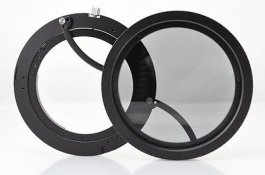rwreich
Member
Seems like an epic showdown between two beloved cameras...
On the Pentax side, you have sturdy metal construction, lenses that open to f/2.8 (or 2.5 in the case of the 105mm), TTL metering, & SLR focusing.
On the Mamiya side, you have lightweight body materials, leaf-shutters that sync with flash at all speeds, less vibration for slower shutters, & rangefinder focusing.
So... Let's pretend that a photog is comfortable with rangefinders and SLRs. Let's pretend that a photog is fine carrying weight (I already backpack with an RB67 and a Pentax 645, at the same time). Let's also pretend that a photog uses a handheld incident meter and wouldn't be bothered by the in-camera meter.
What it comes down to, then, is lens character and capability. For the sake of argument, just compare the Pentax 105mm and the Mamiya 80mm.
The 80 is slower, but can be handheld at slower speeds. The 105 has more character, but only syncs with flash at 1/30.
Of course, there are other lenses with other trade-offs in both systems. I'm not really asking which one should I buy... Just hoping for a discussion about some things I might have missed.
Your thoughts?
On the Pentax side, you have sturdy metal construction, lenses that open to f/2.8 (or 2.5 in the case of the 105mm), TTL metering, & SLR focusing.
On the Mamiya side, you have lightweight body materials, leaf-shutters that sync with flash at all speeds, less vibration for slower shutters, & rangefinder focusing.
So... Let's pretend that a photog is comfortable with rangefinders and SLRs. Let's pretend that a photog is fine carrying weight (I already backpack with an RB67 and a Pentax 645, at the same time). Let's also pretend that a photog uses a handheld incident meter and wouldn't be bothered by the in-camera meter.
What it comes down to, then, is lens character and capability. For the sake of argument, just compare the Pentax 105mm and the Mamiya 80mm.
The 80 is slower, but can be handheld at slower speeds. The 105 has more character, but only syncs with flash at 1/30.
Of course, there are other lenses with other trade-offs in both systems. I'm not really asking which one should I buy... Just hoping for a discussion about some things I might have missed.
Your thoughts?








 So, ya makes your choices and get out and shoot.
So, ya makes your choices and get out and shoot.




